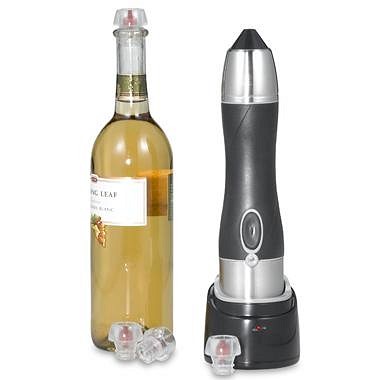Tiki Central / Tiki Drinks and Food / Fresh Lime vs RealLime vs others...
Post #346202 by The Gnomon on Tue, Nov 27, 2007 7:14 AM
|
TG
The Gnomon
Posted
posted
on
Tue, Nov 27, 2007 7:14 AM
I suspect that Doug, the blogger, discounted Nellie & Joe's because that is a Key lime product and most people mean Persian limes unless they specify otherwise. Scottes, I think you should acquire a taste for Key limes. For one thing, they are much older relatives of the Persian limes, which only were developed in the relatively recent past. I personally like both and have only really been getting into Key limes over the past few years when their availability in the Greater Washington Area began to pick up. Once you open a bottle of lime juice of any kind, you've pretty much given it a death sentence. It's first contact with the air touches off a fairly rapid spiral of deterioration. Even if you open the bottle and then close it right away, it's doomed. Because I have not had a deficit of fresh limes, which I will always use before resorting to anything out of a bottle, I have not tried the wine bottle gadget that vacuums the air out of the bottle when you re-cork it. Here's what it looks like (sold at BB&B).
Anyway, anyone who works with lime juice knows that you have to eliminate its contact with the air to keep it around for any length of time (which is never that long at best). You're better off putting leftover lime juice in a bowl and then put plastic wrap down inside so that it touches the surface area of the lime (so that air can't). Real chore and an act of desperation. I think the bottle vacuum might be a viable solution, but I don't know. I probably won't bother to test it unless I ever start having to rely on bottled lime juice. Just an idea for someone else to try if they use a lot of lime juice out of a bottle. Here are a couple of links I've posted in the past regarding Persian Limes (aka Tahiti Limes) and Key Limes (aka Mexican Limes; aka West Indian Limes) for those who want to know more about limes than a human being oughta know. Here's an excerpt from the "Origin and Distribution" section of the Persian Lime page. Clearly, any drinks that were made with limes prior to 1850 used a different variety of lime, most certainly the very popular Mexican/West Indian/Key lime. When the British Royal Navy sailors got the name "Limeys," it was because they were forced to consume a ration of limes, which they did in their daily rum ration which they called "grog." Persian limes would not have been available to them at that time, so it is almost certain that the limes they used were Key limes. The origin of the Tahiti lime is unknown. It is presumed to be a hybrid of the Mexican lime and citron, or, less likely, the lemon, and it is genetically a triploid though only the normal 18 chromosomes have been reported. Dr. Groff, in a reference to Citrus aurantifolia in his "Culture and Varieties of Siamese Pummelos . . . ", said: ". . .it is represented by a large variety known as Manow klom and by a small one known as Manow yai." One might speculate as to whether the large variety might be the female parent of the Tahiti lime. At any rate, it is believed that the Tahiti was introduced into the Mediterranean region by way of Iran (formerly called Persia). It is said that, for some centuries, a virtually identical lime called 'Sakhesli' has been cultivated on the island of Djerba off the coast of Tunisia, and that the local name means "from Sakhos", an old Arabic name for Chios, a Grecian island. Portuguese traders probably carried it to Brazil, and it was apparently taken to Australia from Brazil about 1824. It reached California from Tahiti between 1850 and 1880 and had arrived in Florida by 1883. It was being grown at Lake Placid in 1897. This lime was adopted into cultivation in California but is not extensively grown there, the bulk of California's lime crop being mainly the Mexican lime. In Florida, the Tahiti quickly took the place of the more sensitive small lime and the lemon. Following World War I, the Tahiti lime became a well-established commercial crop. At first, there was market resistance, buyers viewing the Tahiti lime as a "green lemon", and, for some time, Canadians would not accept it because they were accustomed to the more flavorful Mexican lime. In the 1930's, many Florida citrus growers planted limes for extra income and, in 1949, the development of limeade concentrate provided further impetus to the Tahiti lime industry. spelling, of course [ Edited by: The Gnomon 2007-11-27 13:13 ] |

